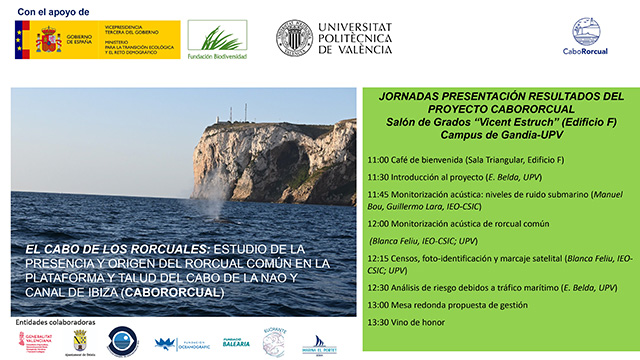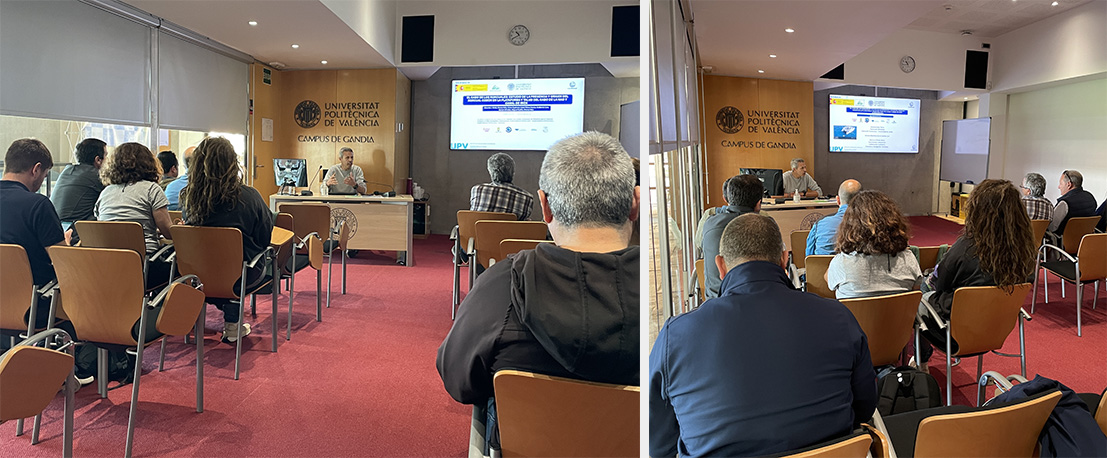“Using passive acoustic monitoring techniques, we’ve detected that the fin whale might be present year round, not just during the summer months, although sightings are more frequent in June and July,” highlighted Eduardo Belda, professor at Campus Gandia (UPV) and principal scientific investigator for the project “Cabo Rorcual: A Study of the Presence and Origin of Fin Whales on the Shelf and Slope of Cabo de la Nao and Ibiza Channel”, with the backing of the MITECO Biodiversity Foundation

The objective of this multidisciplinary research project, underway since 2021, “is to analyze the populations of fin whales (Balaenoptera physalus) – the second largest animal on the planet after the blue whale – that migrate through Cabo de la Nao and identify where they are headed,” underscored the professor from Campus Gandia of the Universitat Politècnica de València(UPV).
On top of that, in addition to providing information on the movements and migratory routes followed by these animals, they can evaluate “the possible risks involved the conservation of this species within the area due to anthropic activity, in particular, associated with maritime traffic and underwater noise.”
Findings of the CaboRorcual Project
At the presentation of the findings of the first two years of the study, Belda explained that “we have observed close to 150 specimens of south-moving fin whales from the viewing areas of the coast of Dénia and Cabo de San Antonio between the months of April to October.”

The research carried out using both acoustic and visual monitoring, “allow us to confirm that the whales are moving in a southerly direction.” Likewise, “the use of photo-identification techniques and the pilot tagging of a specimen with a satellite tracking transmitter corroborate that these swimming along the coast of Alicante in the summer are migrating to the Atlantic.”

This migration takes place “close to the coast in the area of Cabo de San Antonio and Cabo de la Nao, outside the cetacean migration corridor and the current Important Areas for Marine Mammals being proposed.”
For this reason, studies of different management measures for the conservation of this species are underway, including possible measures to reduce the risk of collision associated with sea traffic in the area, a risk that is mainly concentrated in the points of entry to the port of Denia.”
Multidisciplinary Project
Taking part in the CaboRorcual project are researchers from the UPV specialized in the areas of ecology, coastal oceanography and underwater acoustics.
Also collaborating are the Biodiversity Service of the Generalitat Valenciana, the Dénia City Council, the Marina el Portet, the Baleària Foundation, the Oceanogràfic Foundation, the EUCRANTE, EDMAKTUB, EQUINAC and ALNITAK associations and the Maritime Service of the Civil Guard.

Source: Laida Frasquet Pascual, Campus Gandia Office of Communications

